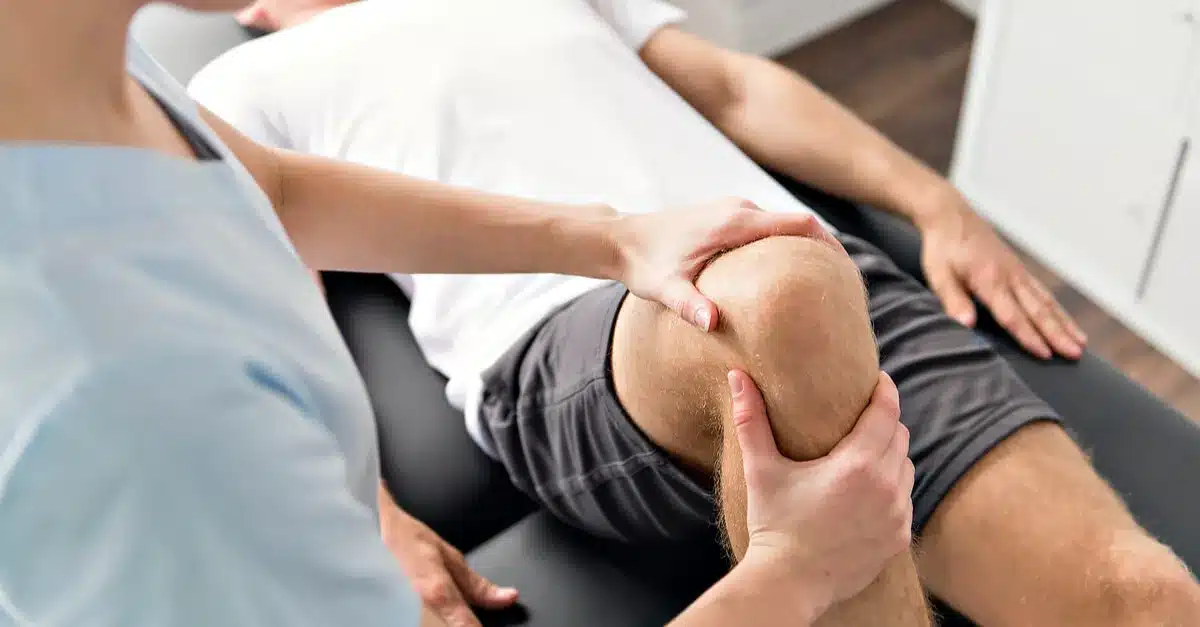Tennis is a blast — fast-paced, competitive, and a full-body workout. But if you’re finding yourself limping off the court more often than not, you’re not alone. A lot of players, from beginners to seasoned pros, deal with aching knees after a match. Ignoring it? Not a good move. At Accelerate Therapy and Performance, we’re all about helping you get back to doing what you love without the pain. So let’s break down why your knees might be hurting after tennis and, more importantly, what you can do about it.
Understanding Knee Pain After Tennis
First, let’s talk about your knees. They’re a complex setup of bones, cartilage, ligaments, and tendons all working together to give you stability and movement. In tennis, you’re constantly sprinting, pivoting, and jumping — all high-impact activities that put major stress on those joints.
When your knees start hurting after tennis, it’s usually because something within that structure is irritated, inflamed, or strained. Whether it’s wear-and-tear, an old injury flaring up, or even something like poor form, your knees are trying to tell you that something isn’t right.
Common Causes of Knee Pain After Tennis
1. Overuse Injuries
Repetitive motion is part of the game, but it can lead to overuse injuries like patellar tendinitis (“jumper’s knee”). This happens when the tendon connecting your kneecap to your shinbone gets inflamed from all the jumping and sprinting.
2. Meniscus Tears
A sudden twist or awkward landing can tear the meniscus — the cartilage that cushions your knee joint. This injury is common among tennis players, especially when quick directional changes are involved.
3. Ligament Strains or Tears
Your ACL and MCL ligaments stabilize the knee during movement. A bad step or a hard pivot can overstretch or tear them, leading to instability and serious pain.
4. Arthritis
If you’re a little more seasoned and have been playing for years, arthritis could be creeping in. Tennis can accelerate cartilage breakdown, especially if you’re playing on hard surfaces.
5. Poor Technique or Equipment
Sometimes, it’s not your body that’s the problem — it’s your form or even your gear. Worn-out shoes without proper support or bad movement habits can lead to unnecessary stress on your knees.
6. Nerve-Related Conditions
Issues like sciatica can sometimes cause referred pain in the knee, even though the real problem is higher up in the back or hip.
How to Know If It’s Time to See a Pro
Listen, some soreness is normal after a tough match, but there are definitely red flags you shouldn’t ignore:
- Swelling that doesn’t go down
- Sharp or stabbing pain
- Knee giving out or feeling unstable
- Clicking, locking, or grinding sensations
- Pain that gets worse instead of better
If any of these sound familiar, it’s time to hit pause on self-diagnosing and book an evaluation with us at Accelerate Therapy and Performance.
Diagnosing Knee Pain
When you come see us, we start with a detailed history — how the pain started, when it’s worst, what makes it better. Then we’ll do a physical exam to check for range of motion, strength, swelling, and stability. Depending on what we find, we might suggest imaging like an MRI or X-ray to get a clearer picture.
Trust us: catching the issue early can make the difference between a quick fix and months of frustration.
Treatment Options for Knee Pain After Tennis
Home Remedies
If the pain is mild, you can start with the basics:
- Rest: Give your knee a break for a few days.
- Ice: Apply ice packs for 15-20 minutes several times a day to reduce inflammation.
- Compression: Knee braces or wraps can offer extra support.
- Elevation: Prop your leg up to help with swelling.
Physical Therapy
This is where we come in. At Accelerate Therapy and Performance, we’ll design a customized rehab plan tailored to your specific injury and goals. We focus on:
- Strengthening muscles around the knee (especially the quads, hamstrings, and hips)
- Improving flexibility
- Correcting movement patterns
- Sport-specific drills to safely get you back on the court
Medical Interventions
If conservative treatment isn’t enough, there are other options like corticosteroid injections or, in rare cases, surgery. We work closely with top orthopedic specialists if a referral is needed.
How to Prevent Knee Pain From Coming Back
Nobody wants to keep dealing with knee pain every time they step on the court. Prevention is key, and here’s how you can stack the odds in your favor:
Strength Training
Building strong, balanced muscles around your knees acts like natural shock absorbers. Focus on exercises like squats, lunges, and step-ups — and don’t forget about your core!
Mobility Work
Tight hips, calves, and hamstrings can all affect how your knees move. Regular stretching and foam rolling can keep you mobile and less injury-prone.
Technique Coaching
Working with a coach can help you refine your footwork, body mechanics, and swing to reduce unnecessary strain on your knees.
Shoe Game
Make sure your tennis shoes offer good cushioning and lateral support. Replace them regularly — old shoes lose their protective qualities over time.
Smart Scheduling
Playing multiple times a week is awesome — but your body needs time to recover. Mix up your activities and include low-impact cross-training like swimming or cycling.
Ready to Get Back in the Game Pain-Free?
At Accelerate Therapy and Performance, we know how much you love the game — and how frustrating it is to be sidelined by knee pain. Our team of experienced therapists is here to help you recover stronger, move better, and play harder. We’re not about cookie-cutter programs; we’re about personalized care that actually works.
If you’re tired of googling “knees hurt after tennis” and getting nowhere, it’s time to take action. Book your consultation with us today and let’s get you back on the court where you belong.



